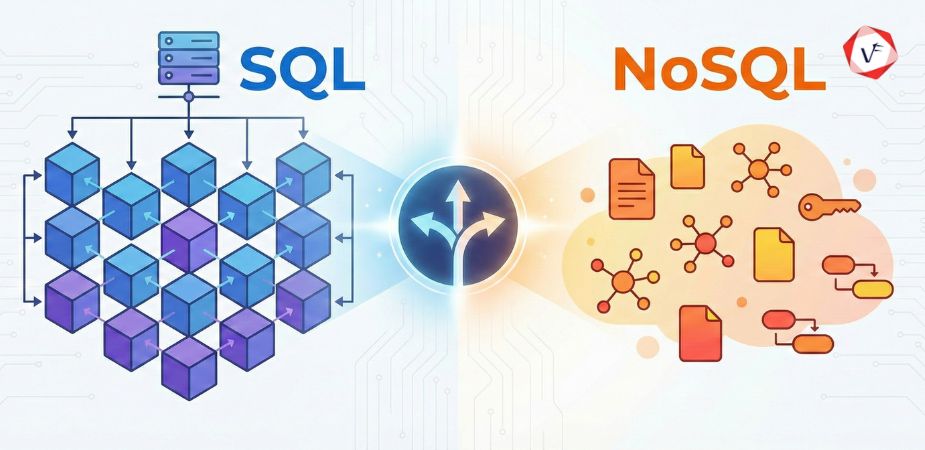Solutions architects play a crucial role in today's rapidly evolving technology landscape. These professionals bridge business requirements with technological capabilities, ensuring IT investments align with long-term organizational goals and deliver measurable value. This comprehensive guide explores the role of solutions architects, their responsibilities, required skills, and career paths in the modern tech industry.
What is a Solutions Architect?
A solutions architect is a key figure in designing and implementing complex IT solutions tailored to specific business needs. They evaluate an organization's existing systems, identify inefficiencies, and design robust, scalable, and efficient solutions. Solutions architects ensure these solutions integrate seamlessly with current technology landscapes while meeting business objectives.
Solutions Architect vs Enterprise vs Technical Architect
Understanding the Differences
Solutions Architect
Focuses on designing and implementing specific solutions that address business challenges. They ensure solutions integrate effectively with existing systems and meet business requirements. Their work is project-based, involving hands-on development and deployment phases.
Enterprise Architect
Takes a broader, holistic view of entire IT infrastructure within organizations. They develop comprehensive strategies and frameworks aligning technology landscapes with business goals. Their role involves long-term planning and governance ensuring IT investments support business growth and transformation.
Technical Architect
Specializes in particular technologies or technical domains within projects. They provide deep technical expertise and guidance ensuring specific components are designed and implemented correctly. Their focus is narrower than solutions architects but offers critical technical depth for individual project elements.
Importance of Solutions Architects in the Tech Industry
Solutions architects play vital roles in the tech industry by ensuring business objectives are met through effective and innovative technological solutions. Their expertise in designing scalable, efficient, and secure systems is crucial for businesses aiming to stay competitive in rapidly changing markets. By bridging gaps between complex technical details and business requirements, solutions architects help organizations maximize IT investments and drive strategic initiatives forward.
Understanding the Role of a Solutions Architect
Key Functions and Definitions
A solutions architect is tasked with designing and overseeing implementation of solutions addressing specific business needs. Their key functions include:
What Solutions Architects Do Daily
Solutions architects evaluate current technology landscapes, identify gaps or inefficiencies, and propose detailed solutions. They work on diverse projects from software applications to network configurations, ensuring each component integrates seamlessly. Their role involves technical design, project management, and stakeholder communication.
Strategic Role in Projects
They ensure all technical aspects align with business goals and outcomes, involving continuous stakeholder communication and adapting project scopes to accommodate new insights or business strategy changes. This strategic responsibility makes them crucial for project success.
How Solutions Architects Fit into Organizations
Solutions architects work within IT and project teams, requiring involvement from initial project concepts through deployment and beyond. They interact with:
- Project Managers: Providing technical guidance ensuring projects stay on track and meet requirements
- Software Developers: Collaborating to implement technical designs meeting architectural standards
- Stakeholders: Ensuring understanding of technical aspects and business goal alignment
When Do You Need Solution Architecture Consulting?
Solution architecture consulting becomes necessary when businesses face complex challenges requiring tailored technological solutions. Organizations typically seek solutions architects when:
- Embarking on significant digital transformation projects
- Migrating to new platforms or cloud environments
- Integrating disparate systems and technologies
- Developing new applications or modernizing legacy systems
- Scaling existing infrastructure to meet growing demands
Key Responsibilities of Solutions Architects
Designing Solutions
Developing Technical Solutions to Business Problems
Solutions architects identify best technologies and design approaches to solve specific business issues, ensuring optimal resource utilization and effectiveness.
Ensuring Alignment Between IT Strategy and Business Goals
They work to align technical aspects with overall business strategy, ensuring IT investments support business objectives and deliver measurable value.
Bridging Technical and Business Gaps
Communicating Complex Concepts to Non-Technical Stakeholders
This involves simplifying complex ideas using analogies or visual aids to enhance understanding across different organizational levels.
Acting as Liaison Between Technical Teams and Business Units
Coordinating with various departments to gather requirements, provide updates, and address concerns throughout project lifecycles.
Ensuring Project Success
Overseeing the Project Lifecycle
Solutions architects oversee entire project lifecycles from initial concepts to deployment and beyond, ensuring continuous alignment with business objectives.
Implementing Best Practices and Standards
Staying current with latest trends and technologies while applying knowledge to design and implementation processes.
Continuous Learning and Adaptation
Keeping Up with Emerging Technologies
Continuous learning through courses, certifications, conferences, and professional communities ensures solutions leverage latest technologies and best practices.
Adapting Solutions to Changing Business Needs
Regularly reassessing solutions and making necessary adjustments to ensure continued alignment with evolving business requirements.
Required Skills for Solutions Architects
Technical Proficiency
- Software Development Knowledge: Understanding of software development lifecycle (SDLC), Agile methodologies, and DevOps practices
- Cloud Computing Expertise: Proficiency in cloud platforms like AWS, Azure, and Google Cloud
- API and System Integration: Knowledge of integration techniques and API management
- Database Management: Understanding of relational and NoSQL databases
- Security Frameworks: Knowledge of cybersecurity principles and compliance requirements
Analytical Skills
- Requirements Analysis: Thorough analysis of business needs, technical requirements, and existing systems
- Solution Design: Developing scalable, efficient architectures considering performance, reliability, and cost-effectiveness
- Risk Assessment: Identifying potential challenges and developing mitigation strategies
- Performance Optimization: Ensuring solutions meet performance benchmarks and scalability requirements
Communication and Leadership Skills
- Verbal and Written Communication: Conveying complex technical concepts to diverse audiences
- Documentation Skills: Creating clear, comprehensive technical documentation
- Presentation Abilities: Delivering effective presentations to stakeholders and executives
- Team Leadership: Leading technical teams and fostering collaborative environments
- Mentorship: Providing guidance and support to junior team members
Problem-Solving Ability
- Creative Thinking: Devising innovative solutions to technical challenges
- Critical Analysis: Evaluating multiple options and selecting optimal approaches
- Risk Management: Identifying potential risks and developing contingency plans
- Decision Making: Making informed decisions under pressure and uncertainty
Path to Becoming a Solutions Architect
Educational Background
Recommended Degrees
A bachelor's degree in computer science, information technology, or related field is typically required. Advanced degrees like MBA or Master's in Information Systems can be beneficial, providing strong foundations in technical and business principles essential for solutions architects.
Professional Certifications
- AWS Certified Solutions Architect: Validates expertise in AWS cloud solutions
- Microsoft Azure Solutions Architect Expert: Demonstrates proficiency in Azure technologies
- TOGAF Certification: Provides enterprise architecture framework knowledge
- Google Cloud Professional Architect: Shows competency in Google Cloud Platform
- Salesforce Certified Technical Architect: Specialized certification for Salesforce ecosystems
Professional Experience Path
Entry-Level Roles (0-3 years)
- Software Developer
- Systems Analyst
- Network Administrator
- Database Administrator
Mid-Level Roles (3-7 years)
- Senior Software Developer
- Technical Lead
- IT Project Manager
- System Integration Specialist
Senior Roles (7+ years)
- Solutions Architect
- Enterprise Architect
- Principal Architect
- Chief Technology Officer
Building a Professional Portfolio
Developing portfolios of successfully completed projects demonstrates practical experience and expertise. Portfolios should highlight key projects showcasing ability to design and implement effective solutions, providing tangible proof of skills and accomplishments that significantly enhance career prospects.
Salary and Career Outlook
Salary Ranges by Experience Level
- Entry Level (0-2 years): $80,000 - $120,000
- Mid Level (3-7 years): $120,000 - $160,000
- Senior Level (8-15 years): $160,000 - $220,000
- Principal/Lead (15+ years): $220,000 - $300,000+
Geographic Variations
Salaries vary significantly by location, with tech hubs like San Francisco, Seattle, and New York offering premium compensation packages, while remote work opportunities increasingly provide access to competitive salaries regardless of location.
Frequently Asked Questions
What does a solutions architect do daily?
Daily activities include analyzing business requirements, creating technical designs, collaborating with development teams, meeting with stakeholders, reviewing system architectures, and ensuring projects align with business goals and technical standards.
How long does it take to become a solutions architect?
Typically 7-10 years of progressive experience in IT roles, starting from software development or systems analysis positions. The career path involves building technical expertise while developing business acumen and leadership skills.
What's the difference between solutions architect and software architect?
Software architects focus specifically on software system design and technical implementation, while solutions architects take broader views encompassing business requirements, multiple technologies, and organizational alignment.
Do solutions architects need coding skills?
While not always required to code daily, technical proficiency including programming knowledge is essential for understanding system capabilities, reviewing technical designs, and effectively communicating with development teams.
What industries hire solutions architects?
Solutions architects work across industries including technology, finance, healthcare, retail, manufacturing, government, and consulting firms - essentially any organization requiring complex IT solutions and digital transformation initiatives.
Is solutions architect a good career choice?
Yes, solutions architect roles offer excellent career prospects with high demand, competitive salaries, intellectual challenges, and opportunities to work on cutting-edge technologies while making significant business impact.
Key Career Success Factors
- Continuous Learning: Technology evolves rapidly, requiring ongoing skill development
- Business Acumen: Understanding business needs is as important as technical expertise
- Communication Skills: Success depends on effectively bridging technical and business teams
- Adaptability: Ability to work with diverse technologies and changing requirements
- Leadership: Growing into roles requiring team guidance and strategic thinking
Conclusion
Solutions architects represent critical roles in modern technology organizations, combining technical expertise, analytical capabilities, and excellent communication skills. They play strategic roles in project development and execution, ensuring technology investments align with business objectives while delivering measurable value.
The path to becoming a solutions architect requires dedication to continuous learning, progressive experience building, and development of both technical and business skills. With strong career prospects, competitive compensation, and opportunities to work on innovative projects, solutions architecture offers rewarding career paths for technology professionals.
For businesses looking to optimize technology investments and achieve strategic goals, partnering with experienced solutions architects or consulting firms like Vofox ensures solutions are designed and implemented to meet unique business needs, driving innovation and organizational success. Understanding the key responsibilities and required skills helps organizations make informed decisions when hiring or developing solutions architecture capabilities.
As technology continues evolving and digital transformation accelerates across industries, demand for skilled solutions architects will continue growing, making this an excellent time to pursue or advance careers in solutions architecture.




